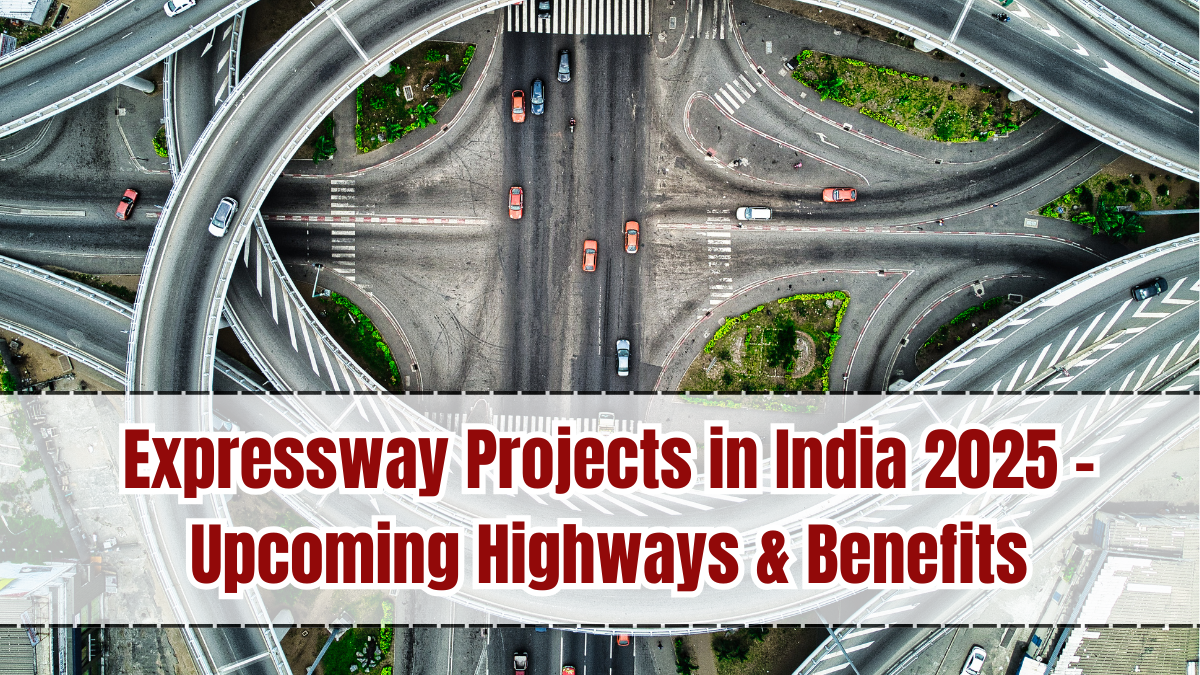India is moving into a new era of connectivity where expressway projects in 2025 are expected to play a crucial role. These mega road projects are designed not only to make travel faster but also to stimulate trade, encourage tourism, and integrate regions more closely. With rapid urbanization and a growing economy, the need for reliable road infrastructure has become more critical than ever. The government, through programs like Bharatmala Pariyojana and the National Infrastructure Pipeline (NIP), has made expressway development one of its top priorities.
By 2025, several new highways will be operational, while others will be in advanced stages of completion. These expressways represent more than just roads—they are lifelines for growth, connecting industries, markets, and communities.

Importance of Expressway Projects in 2025
The growing demand for quicker, safer, and more efficient travel has made expressway projects vital. Highways built under modern standards reduce travel time significantly while ensuring smoother driving conditions. They also cut down on fuel costs, reduce vehicle wear and tear, and help decongest existing national and state highways.
For industries, expressways mean faster delivery of goods, reduced logistics expenses, and improved supply chains. For the public, it means easier access to jobs, educational institutions, and healthcare facilities. For the economy, expressways translate into regional development, urban growth, and increased investment opportunities.
Major Expressway Projects Coming Up in 2025
Some of the most anticipated new highways in 2025 include:
-
Delhi–Mumbai Expressway: Stretching across 1,386 km, this is one of the largest expressway projects in India. It will cut travel time between Delhi and Mumbai from 24 hours to just 12 hours. Several sections are scheduled for completion in 2025.
-
Ganga Expressway (Uttar Pradesh): Expected to be India’s longest at 594 km, connecting Meerut to Prayagraj, this expressway will drastically improve intra-state connectivity.
-
Dwarka Expressway (Delhi–Gurgaon): Designed as a modern urban expressway, this project aims to decongest the Delhi–Gurgaon stretch. By 2025, it is projected to be fully operational.
-
Bengaluru–Chennai Expressway: This 262 km corridor will reduce travel time between the two IT hubs to just 3–4 hours, strengthening industrial growth in the region.
-
Lucknow–Kanpur Expressway: A vital route for Uttar Pradesh, it will cut the current travel time by half and support state-level trade and commuting.
Benefits for Travelers and the Economy
The benefits of expressway projects in India 2025 extend to multiple sectors:
-
Faster Travel: Journeys between metros and smaller towns will be shorter, saving time for both individuals and businesses.
-
Tourism Boost: Sites of cultural, spiritual, and natural significance will be more accessible, promoting domestic tourism.
-
Business Growth: Lower transportation costs will make Indian goods more competitive in global markets.
-
Job Creation: Construction, maintenance, and roadside facilities generate employment at large scale.
-
Urban Expansion: Areas surrounding expressways often develop into hubs of commercial and residential activity.
Eco-Friendly and Smart Expressways
A highlight of the highways 2025 initiative is the focus on sustainability. Green expressways will feature:
-
Solar-powered lighting systems.
-
EV charging stations along major corridors.
-
Intelligent Traffic Management Systems (ITMS).
-
Rainwater harvesting and plantation drives along routes.
This ensures that development is not only fast but also environmentally responsible.
Travel India Made Easier
For the common traveler, 2025 will mark the beginning of hassle-free road journeys. With modern tolling systems like FASTag, electronic toll plazas, and digital monitoring, waiting times at toll booths will be reduced. Service areas with clean restrooms, food courts, and emergency facilities are being added to make long journeys more comfortable.
Conclusion
India’s expressway projects in 2025 are more than just roadways—they are highways to progress. They represent a vision of a connected India where mobility fuels economic growth, industries expand, and tourism thrives. For the ordinary traveler, it means faster, safer, and more convenient journeys. For the nation, it means stronger trade networks, increased global competitiveness, and a future-ready infrastructure.
As India accelerates towards becoming a $5 trillion economy, these expressways will play a defining role, ensuring that development reaches every corner of the country.
FAQs
What are the major expressway projects in India 2025?
Some of the key projects include the Delhi–Mumbai Expressway, Ganga Expressway, Dwarka Expressway, Bengaluru–Chennai Expressway, and Lucknow–Kanpur Expressway.
How will expressways benefit travelers in 2025?
Expressways will cut travel times drastically, reduce fuel costs, and provide modern amenities like clean food courts, digital tolling, and emergency facilities.
Are expressways environmentally sustainable?
Yes. Many expressways in 2025 are being built with green initiatives such as solar lighting, rainwater harvesting, plantation drives, and EV charging stations.
How do expressways help the Indian economy?
They reduce logistics costs, improve supply chains, boost trade, create jobs, and encourage real estate and urban development along corridors.
Which is the longest expressway in India expected in 2025?
The Ganga Expressway in Uttar Pradesh, spanning around 594 km, is expected to be India’s longest expressway under development.
Click here to know more.
